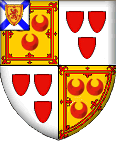|
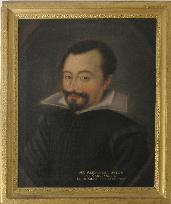
The Seton
Baronet's
of Abercorn, Representative's of Touch, de
jure Lord's Gordon and
Hereditary Armour Bearer's to the King/Queen
The Setonís of Abercorn derive their
branch designation from the Barony of Abercorn in Linlithgowshire which
they formerly possessed. The line of the Setonís of Abercorn was
established by the second son of James Seton of Touch from his
second wife, Eline-Jane Edmonstone, daughter of Edmonstone of that
Ilk and Ednam, County Roxburgh, who were descended from
the early Setonís. The Manor of Abercorn once belonged to the
House of Avenel in the reign of King David I (1124-1153), and the
Barony of Abercorn like that of nearby Gargunnock was sometime in
the interest of Sir Ninian Seton, 3rd baron of Touch
and his grandson, James Seton, 5th baron of Touch, and
was later acquired by Royal Charter by Jamesí gr-grandson, Sir Walter Seton, 1st
Baronet of Abercorn.
Sir Alexander Seton of Gargunnock acquired
the estate of Gargunnock near the family estate of Touch, both in Stirlingshire. He later acquired
the barony and estate of Culcreuch in addition to that of
Gargunnock, in 1624, in settlement of monies owed him by his
brother-in-law, Robert Galbraith, 17th Chief of that Clan who was
forced to flee to Ireland, bankrupt, to escape his debts. Later
the same year, Sir Alexander, noted for being ďa man of
parts and learningĒ, was appointed a judge and admitted an
ordinary Lord of Session, on the 4th of February, 1626,
and took the title Lord Kilcreuch. Soon his successful career
necessitated the selling of Culcreuch to be nearer
Edinburgh and in 1632, 8 years after purchasing it, he sold Culcreuch to Robert Napier.
Sir Alexander was twice married: first on the
30th of August, 1598, to Marion Maule of Glaster by
whom he had a son and heir called Alexander, and second; to the
daughter of the 16th Chief of Galbraith. Sir Alexander
had several children and kept an exceptional house, noted
for itís order and high standard of education. As a man of
unscrupulous honesty in a very unscrupulous age, as well as for
his unswerving loyalty and service to the Crown, Alexander was
Knighted by King Charles I at Holyrood on the 12 of July, 1633.
And finally, on account of his infirmity of sight and many years
of service, he resigned his seat on the Bench, with itís honor and
emoluments, on the 6th of June, 1637.
Lord Kilcreuch was succeeded by his eldest son,
Alexander Seton, of Graden. Alexander married Margaret Cornwall
(commonly called Janet) of Bonhard, and they had several children.
He was noted for the shrewd management of his affairs and estate,
and like his father excelled in learning. He was an accomplished
musician and poet, and ensured that his children also received an
advanced education. Alexander was himself succeeded by his son,
Sir Walter Seton, who acquired the barony of Abercorn, and who was
recognized and elevated to the peerage by King Charles II, in
1663, as a Baronet of Nova Scotia, as Sir Walter Seton, 1st
Baronet of Abercorn.
1665
ALEXANDER SETON, son of Alexander S. of Graden, and Margaret (or
Janet?) Cornwall of Bonhard. In early life he qualified as a
physician, but having studied divinity, was settled as a clergyman
in England. He was pres. by the Archbishop, and inst. Oct. 1665.
Frequently at war with the Town Council, and violently opposing
their wish for the appointment of a second min., he was finally
libelled on various scandalous counts, and dep. 29th Aug. 1690;
died Nov. 1690. He marr. Anna Channell, an Englishwoman, who died
May 1709, and had issue-Alexander, collector of Excise for East
Lothian; Ann (marr. Andrew Crawford of Locheote).-[Test. Reg.,
Reg. Collat; MS. Acc. of Min., 1689; Fountainhall's Dec., i.; Reg.
Gen. Ass., 1692.]
Sir Walter Seton of Abercorn, 1st Baronet of
Abercorn
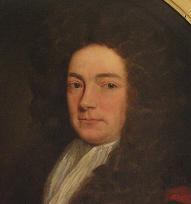
Sir
Walter Seton of Abercorn, 1st Baronet, had a Charter under the Great
Seal of the Lands and Barony and Lairdship
of Abercorn, County Linlithgow, in 1662. Having filled an important position in
the Revenue Service of the Government, he was created a Baronet of Nova Scotia
by King Charles II in 1663, with the remainder to his heirs-male whatsoever. His Arms were registered with Lyon Court in 1672.
The
hereditary order of Baronets was instituted in Scotland by Charles I in 1625,
and as in the earlier English baronetage of James I, only estated gentlemen were
selected for the honor. Scots baronets are called of Nova Scotia, in Canada,
because their institution was connected in itís origin with Sir William
Alexanderís scheme of colonizing that country, and his direct family and that of
his cousins the Setonís of Touch, and the Setonís of Meldrum family in
Aberdeenshire, maintained interests in both Nova Scotia and in the north of
Ireland, Ulster.
He
maintained throughout his life, a large library, and many of his former books
can be found for sale in various book collections and auctions. He was an
accomplished linguist, and was fluent in Latin, French and the language of the
Scots, known as Gaelic. His life-long career was dedicated to the Revenue
Service of the Government, and he was instrumental in increasing the Royal
bankroll.
Sir
Walter Seton married Christian Dundas, daughter of George Dundas of Dundas, and
had several children. In the tradition of his father and grandfather, he too
ensured a high degree of learning for his children and encouraged the study of
Law for his sons, and marriages of quality for his daughters. He was succeeded
by his eldest son, Walter, on his death on February 20th, 1692, as 2nd
Baronet of Abercorn, and his second son Alexander acquired the estate of Hiltly
whoís line founded the Swedish branch of the Setonís family (rep.Robert Seton of
Sweden, and present armiger Anders Seton of Sweden, member of the Heraldry Society of
Scotland, and Robert Seton of Sweden), and the Setonís of Preston and Ekolsund.
Sir
Walter Seton, 2nd Baronet of Abercorn, was a distinguished Advocate
at the Scottish Bar, and an official of Edinburgh town. He married Euphemia
Murray, daughter of Sir Robert Murray of Priestfield, on the 6th of
September, 1702 and had several children and by whom he was succeeded by his
son, Henry Seton. Sir Walter, 2nd Baronet of Abecorn died January 3rd,
1708.
Sir Henry Seton of Abercorn, 3rd Baronet of Abercorn
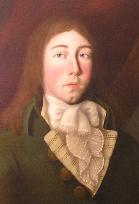
Sir
Henry Seton, 3rd Baronet of Abercorn succeeded his father and on
the death of James Seton of Touch without issue in 1742 he became the lineal
heir of the Seton's of Touch and heir-male of Sir Alexander Seton, eldest son of the first Earl of Huntly: de
jure Lord Gordon. The Abercorn Setonís have never ceased to claim this
ancient title. Likewise from the Setonís of Touch line the Baronetís of Abercorn
inherited and became the Hereditary Armour Bearerís of the King, which honour
they maintain to this very day.
Sir
Henry married Barbara Wemyss, daughter of Sir John Wemyss of Bogie, Bt. And had
several children. A successful estate manager, he encouraged military service
in his sonís, and yet saw his family through the difficulties of the time of the
civil wars in Scotland and delicately navigated his familyís loyalties and the
political changes and which prudent efforts ensured a continuity of line.
His
three sons, Henry, George and Robert were well traveled in Europe, America and
in India. Sir Henry maintained active ties with the Setonís of Parbroath who
had located in America, and his son George married a daughter of that House,
Barbara Seton, daughter of William Seton of New York, rep. of Parbroath. Sir
Henryís eldest son and heir married the daughter of Alexander Hay of Drumelzier,
the heir of line of the Seton Viscounts Kingston, and bloodline of the Earls of
Winton and the main line of the Seton Family.
Sir
Henry died in 1751 and was succeeded by his eldest son, Sir Henry Seton.
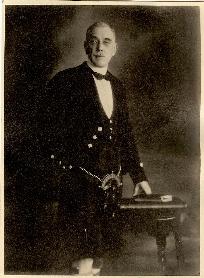 It
should be noted of the Seton's of Abercorn, that the later marriage to Margaret Hay
of the Drummelzier family brought the senior lineal
bloodline of the Seton's, from Viscount Kingston's line, to that of the
Abercorn's and for which they had been openly acknowledged, even as public as a
letter published in the Chicago Tribune by the Marquis De Fontenoy in January
3rd, 1905. It
should be noted of the Seton's of Abercorn, that the later marriage to Margaret Hay
of the Drummelzier family brought the senior lineal
bloodline of the Seton's, from Viscount Kingston's line, to that of the
Abercorn's and for which they had been openly acknowledged, even as public as a
letter published in the Chicago Tribune by the Marquis De Fontenoy in January
3rd, 1905.
In 1923
Lieutenant-Colonel Sir Bruce Gordon Seton, 9th Baronet,
petitioned the Crown for his right to the title of Lord
Gordon. Although the Committee for Privileges of the
House of Lords admitted that he was the heir male of the
first Earl of Huntly, they decided that he had not provided
enough evidence of the creation and existence of the title
of Lord Gordon.
Sir Bruce Seton was succeeded by his two
son's in succession, Sir Alexander Hay Seton
,10th Baronet; and Major Sir Bruce Lovat
Seton of Abercorn, 11th Baronet ( 29
May
1909Ė 28
September
1969), better known as Bruce Seton,
a
British actor and soldier. Major Sir
Bruce Lovat Seton was born in
Simla,
India, the younger of two sons of
Lieutenant-Colonel
Sir Bruce Seton of Abercorn, 9th Baronet
and his wife, Elma, and was educated at The
Edinburgh Academy and
Sandhurst. He was commissioned into the
Black Watch in 1929, but resigned his
commission in 1932.
Seton's acting career began in 1935 when
he starred in
Ralph Ince's film, Blue Smoke. On
the set, he met fellow actor
Tamara Desni, and the two married in
1936 and divorced in 1940. A brief
interruption came during
World War II. In November 1939 he was
commissioned
Lieutenant in the
Cameronians, ending the war as a
Major. His last role was as the voice of
Beadle in
The Wonderful World of Disney from
1962-63. On the death of his brother in 1963
without male heirs, Seton inherited the
former's baronetcy. Seton had been married
twice but also had no male heirs and so, on
his own death in 1969, the title passed to
his cousin,
Christopher.
Played Inspector Fabian of Scotland Yard
in 1950s TV series "Fabian of The Yard". The
series was based on the career of the former
Scotland Yard Detective Inspector Robert
Fabian who usually appeared briefly before
the final fade-out to wind up the story.
|







